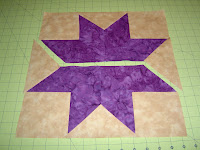A few reasons I suspect my husband hates the fabric stash is that most often I need to ask for his assistance in pulling the giant rubber maid bins up from the basement when planning a new project. I've got a giant bin of seasonal and holiday fabric, another bin with specialty non-cotton fabrics, another bin of novelty fabrics (like Disney characters and Marvel Comics licensed fabrics) and then there's the super huge bin of all quilting cotton that doesn't fit into the mold of the aforementioned categories. Dragging them up the stairs of our house is a chore and every time I ask him to do this for me he and I have the same discussion.. goes a bit like this...
Husband - "seriously? do you really need all that fabric? why don't you go through it and throw away what you don't need."
Me - "Yes. I need it all."
Husband - "... but you're not using it all, every time I bring the bin up it is the same fabric"
Me - "One day I will be looking for a specific scrap and I will remember it is in here."
This usually is followed by a sigh and some eye rolling. Funny thing is that we have the same type of conversation when we discuss the basement, garage and all his power tools. We had this discussion last week while cleaning out the garage, went a bit like this...
Me - "Seriously? do you really need all these tools, nuts, bolts and junk? Why don't we donate them or have a yard sale or something?"
Husband - "Yes. I need all of them."
Me - "... but I have never seen you ever use half of it.. like that giant drill press.. why would we keep it if you never have anything that needs drill pressing?
Husband - "One day you will ask me to fix something and you will be happy that I already have the right tool for the job and won't have to go out and buy something new."
And again... repeat the sighs and eye rolling.
Well, this week the challenge that I had for myself was to make a quilt completely from my stash bins, no newly purchased fabrics, except for the batting the complete project right from the bins. In order to do this I had to choose a design that lends itself to many different fabrics as a stash bin rarely contains fabric in quantities large enough for a whole project, at lest mine doesn't. It's bits and pieces and some small baggies of tiny, already cut, leftover triangles and squares. I have done this before when I made a small lap-sized Log Cabin quilt for Glenn's Dad for a Christmas gift. However, this time I wanted to make a large, bed-sized, project. So I chose to make a twin sized project with many different greens offset by a creme color.
This pattern is from The Thimbleberries book of quilts and the individual square design is called "Paddles and Pinwheels". This has been one of my favorite patterns because I just love the way that the creme color, the pin wheels, sometimes pops out and becomes the focal shape and other times you look at it and see the paddles, the greens.
Anyone who knows me or has read my blog before knows I am really, really bad at doing things randomly and even when something looks random it is usually very calculated. When I try to create a 'random' look I usually line up all my colors and assign a letter or a number to each one. I then draw a grid with the matching number of blocks that the quilt will have and play a little game of Sudoku with the letters or numbers. With that I verify that no block color is repeated too often, is in line with another, touches another block with the same color or is adjacent to... STOP THE INSANITY!!
For this project I didn't want to do that.. so this time I simply laid all my cut paddles down and moved them around until the variation looked pleasing to me. I will say, it was a much more enjoyable activity playing with the fabric colors then re-inventing the fabric equivalent of Benjamin Franklin's mathematical magic squares. I also had different amounts of each fabric, so the same color repeats different times than another, some paddle fabrics I only had enough for 2 blocks, other fabrics I had enough for 4 or 5 which helped with getting away from a repeated pattern of color.
For the boarder of this quilt I simply created stripes of the pin wheel creme and the forest green paddle fabric as those were the two that I had most of. To make the corners a bit interesting and to save me the trouble of matching the stripes perfectly within a mitered corner, I created a 9 patch and used it to interrupt the two boarders where they met.
These photos are of only the quilt top as I am holding this one aside for finishing on my new Hinterberg quilt frame and Viking 17 inch long arm machine!! The big brown UPS truck brought it to me today and hopefully this weekend I will be able to get it put together and finish all the projects I've got waiting in the wings... watch my blog for updates and photos once we figure out where to put the darn thing!!


























